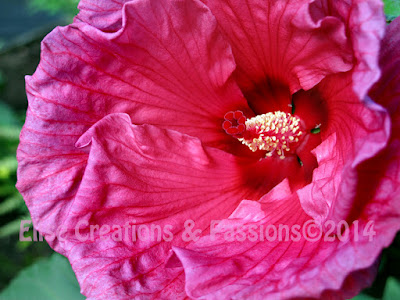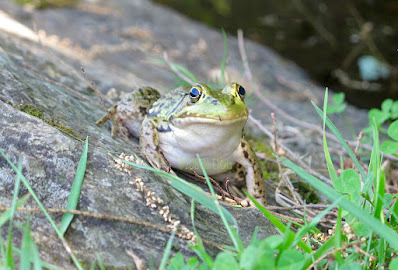Thursday, December 15, 2022
Hibiscus Oh How I Love You
Monday, November 21, 2022
Winter Squash Tip
Disclaimer
My blog is meant to inform and I strive to be totally accurate. It is solely up to the reader to ensure proper plant identification. Some wild plants are poisonous or can have serious adverse health effects.
Thursday, October 27, 2022
Fall Foliage 2021-2022
Nature's Artwork
Asters growing out of a rock wall.
Shelburne, Vermont
Autumn Decorations in Fletcher, Vt.
Barn That Looks Like A Castle, at Meach Cove, in Shelburne, Vermont.
Another Autumn Road Trip In Vermont.
Autumn Color On A Back Road in Hinesburg, Vermont.
Color & Light In A Big Old Beautiful Maple Tree
THANKS FOR YOUR VISITS, FAVS AND COMMENTS. AS ALWAYS, APPRECIATED VERY MUCH! © ALL RIGHTS RESERVED BY ELISE T. MARKS. PLEASE DO NOT USE THIS IMAGE ON WEBSITES, BLOGS OR ANY OTHER MEDIA WITHOUT MY EXPLICIT WRITTEN PERMISSION.
Friday, October 14, 2022
Pumpkin Fun & Autumn Art
This giant pumpkin weighs 1517.5 Lbs. and was grown by Kevin Campanion of Huntington, Vt. It’s on Display at Whitcomb Farm in Williston, Vermont. I really wanted to sprawl across the top of it, but climbing on the pumpkin is not allowed, according to the sign on the left.
MY PHOTOGRAPHS ARE AVAILABLE FOR PURCHASE THANKS FOR YOUR VISITS, FAVS AND COMMENTS. AS ALWAYS, APPRECIATED VERY MUCH!© ALL RIGHTS RESERVED BY ELISE T. MARKS. PLEASE DO NOT USE THIS IMAGE ON WEBSITES, BLOGS OR ANY OTHER MEDIA WITHOUT MY EXPLICIT WRITTEN PERMISSION.
Thursday, October 6, 2022
Seeds & Pods
Milkweed Gone To Seed
I love how shiny and silky these seeds look, as the wind spreads them to create more milkweed for next years Monarch Butterflies. Monarchs can’t survive without milkweed. They need it to lay their eggs on and their caterpillars only eat milkweed plants. The monarch butterfly population is in danger because milkweed plants are disappearing, due to loss of habitat stemming from land development and the widespread spraying of weed killer on the fields where they live. We can help monarchs by growing milkweed in our yards, fields, and gardens.
MY PHOTOGRAPHS ARE AVAILABLE FOR PURCHASE THANKS FOR YOUR VISITS, FAVS AND COMMENTS. AS ALWAYS, APPRECIATED VERY MUCH!© ALL RIGHTS RESERVED BY ELISE T. MARKS. PLEASE DO NOT USE THIS IMAGE ON WEBSITES, BLOGS OR ANY OTHER MEDIA WITHOUT MY EXPLICIT WRITTEN PERMISSION.
Sunday, September 25, 2022
The Gateway To Peace
This is one of the loveliest yards in town, with a gate made of wood and vines.
MY PHOTOGRAPHS ARE AVAILABLE FOR PURCHASE THANKS FOR YOUR VISITS, FAVS AND COMMENTS. AS ALWAYS, APPRECIATED VERY MUCH!© ALL RIGHTS RESERVED BY ELISE T. MARKS. PLEASE DO NOT USE THIS IMAGE ON WEBSITES, BLOGS OR ANY OTHER MEDIA WITHOUT MY EXPLICIT WRITTEN PERMISSION.
Friday, September 23, 2022
Pinewood Gingertail Mushrooms
MY PHOTOGRAPHS ARE AVAILABLE FOR PURCHASE THANKS FOR YOUR VISITS, FAVS AND COMMENTS. AS ALWAYS, APPRECIATED VERY MUCH!© ALL RIGHTS RESERVED BY ELISE T. MARKS. PLEASE DO NOT USE THIS IMAGE ON WEBSITES, BLOGS OR ANY OTHER MEDIA WITHOUT MY EXPLICIT WRITTEN PERMISSION.
Wednesday, September 21, 2022
Froggy World
Rock Lounging Or Waiting For A Snack
Frog hanging out by the pond.
Froggy Companion Hanging Out With Me On The Shore
Green Frog
Lithobates clamitans or (Rana clamitans)
is a common amphibian found living in shallow freshwater ponds, streams, road-side ditches, lakes, swamps, streams, and brooks in the northeastern United States. They are typically green to brownish with obscure brown spots or blotches and two distinctive ridges that run from each eardrum, down both sides of the back, and the underside of this species is whitish. Males may have bright yellow throats. Mature females are typically larger than males. The male tympanum (hearing structure behind the eye) is twice the diameter of the eye, whereas the female’s is about the same size as the eye. Their distinctive call sounds like a plucked banjo string, usually given as a single note, but sometimes repeated. Green frogs will eat insects, spiders, fish, crayfish, shrimp, other frogs, tadpoles, small snakes, and snails.
Green Frog Smile
The Greenest Frog I've Ever Seen
I love the way she has her hands turned under.
(Lithobates pipiens or Rana pipiens)
With Cool Shadows On Duckweed
Tree Frog
Also known as Spring Peeper
Spring peepers are small tree frogs, with smooth skin in shades of tan, brown, green, or gray, with lines that form an X shaped pattern on their backs. Their bellies are white to cream-colored, and they have dark bands on their legs and a dark line between their eyes.
Spring peepers are well camouflaged to look like tree bark and can make themselves lighter or darker to better match their surroundings. The pad on each of the amphibians toes allow it to grip onto plants, while its webbed hind feet give it support. Although they are good climbers, they spend most of their time on the ground, often hiding under leaf litter during the day. Spring peepers are rarely seen, but during mating season in the spring, they are often heard. They live in moist, wooded areas, fields, and grassy lowlands near ponds and wetlands. They are very tolerant of cold conditions and hibernate during the winter in soft mud near ponds, under logs, and in holes or loose bark in trees. They can withstand freezing during winter hibernation due to a natural antifreeze in their blood. Snakes, salamanders, large carnivorous insects, raptors, and other birds prey on adult spring peepers. Tadpoles are eaten by aquatic invertebrates and salamander larvae. Adult spring peepers come out to feed in the late afternoon and early evening. They generally eat beetles, ants, flies, and spiders. Tadpoles feed on algae and microorganisms. Spring peepers are known for the males mating call, a high-pitched peeping sound repeated about 20 times a minute. However, the faster and louder they sing, the greater the chances of attracting a mate. They often congregate near water and sing in trios, with the deepest-voiced frog starting the call. They begin breeding early in the spring and call on warm spring nights and during the day in rainy or cloudy weather. Females lay their eggs in vernal pools, ponds, and other wetlands where fish are not present. A female may lay anywhere from 750 to 1,200 eggs, which attach to submerged aquatic vegetation. Males fertilize the eggs as they are laid. Depending on the temperature, eggs can hatch within 2 days to 2 weeks. The tadpoles have gills to breathe underwater and tails to help them swim. Tadpoles transform into frogs over the course of 6 to 12 weeks. Spring peepers are said to have short lives, living 3 to 4 years at most.























































